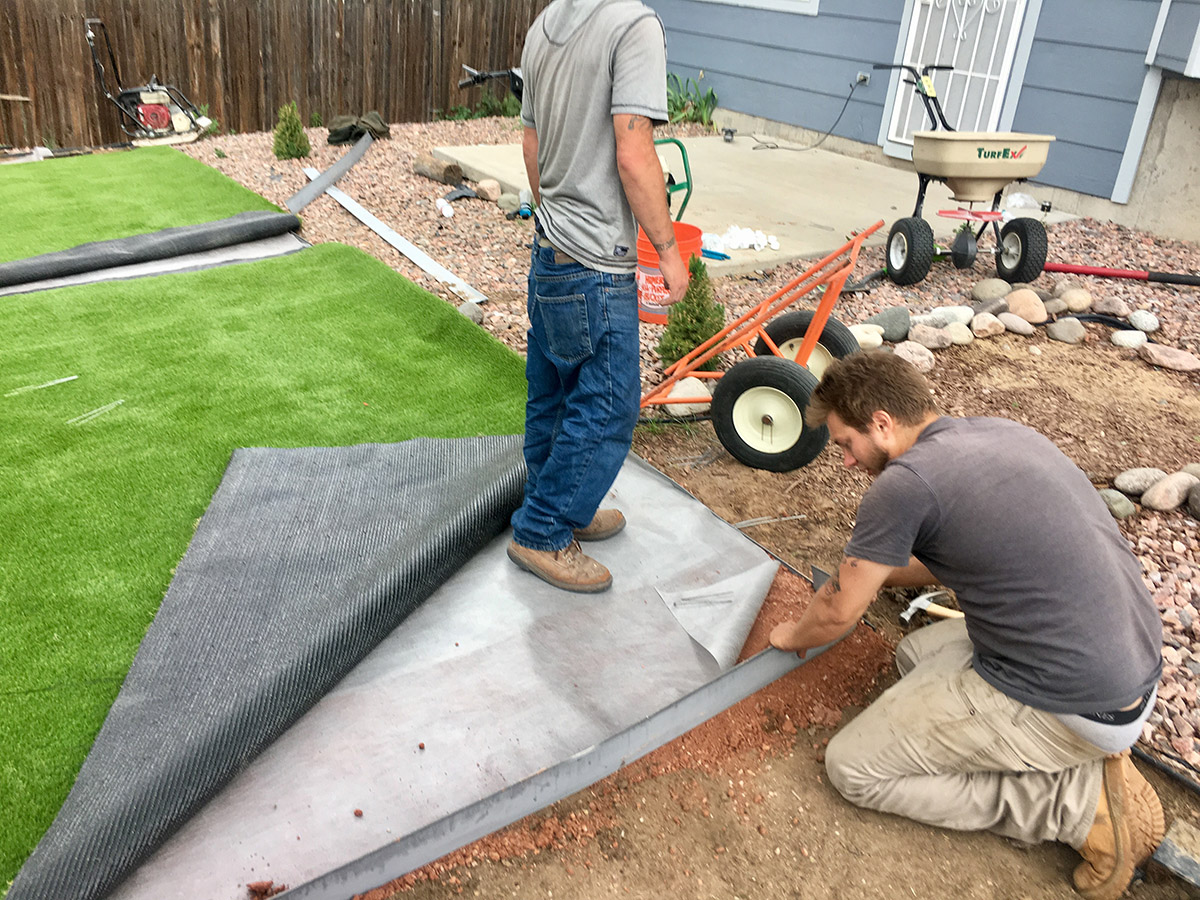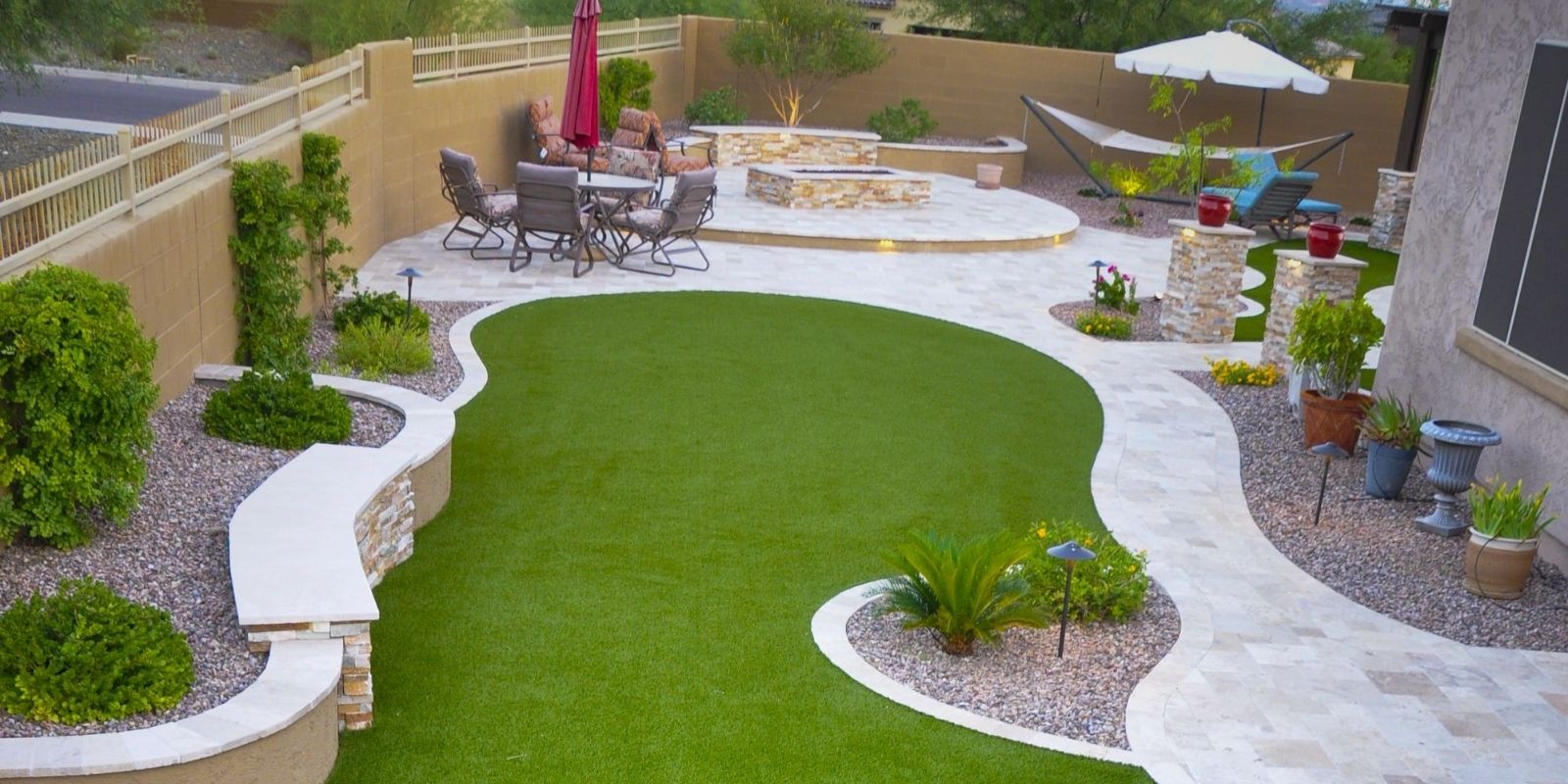Delve Into the Environmental Benefits of Opting for Artificial Lawn Solutions
The fostering of fabricated lawn options offers a compelling chance to address pushing ecological challenges. By substantially lowering water usage and reducing the application of unsafe chemicals, these options not only promote sustainable landscaping however also safeguard regional ecological communities.
Water Preservation Benefits
One of the most significant benefits of fabricated grass is its ability to conserve water. In contrast, fabricated grass does not require watering, considerably decreasing the general demand for water sources.
By eliminating the demand for routine watering, synthetic grass adds to sustainable landscape methods and aids alleviate the environmental influence of excessive water usage. The preservation of water extends to the reduction of overflow, which can lead to soil disintegration and river pollution.
Additionally, the setup of fabricated turf allows towns and property owners to allocate water resources a lot more successfully, concentrating on essential uses such as alcohol consumption water and agriculture. The change towards synthetic grass not only promotes responsible water usage yet additionally lines up with more comprehensive ecological objectives targeted at maintaining natural deposits.
As neighborhoods progressively prioritize sustainability, the water conservation benefits of synthetic grass provide a compelling case for its fostering in residential and industrial landscape design jobs.
Minimized Chemical Usage
The transition to fabricated lawn dramatically lowers the reliance on chemical therapies generally made use of in natural turf upkeep. Standard grass management typically entails the application of herbicides, pesticides, and fertilizers to promote growth and control parasites. These chemicals can present threats to human wellness, regional wildlife, and the atmosphere, adding to soil and water contamination.
In contrast, artificial lawn removes the need for these hazardous compounds. By minimizing the launch of artificial substances into the environment, synthetic lawn advertises healthier dirt and water systems.
Furthermore, the absence of chemical overflow linked with artificial lawn installations aids protect neighborhood rivers from contamination, sustaining water life and preserving biodiversity. Arizona turf. As communities increasingly focus on lasting techniques, choosing synthetic grass provides a viable solution that straightens with ecological preservation objectives. With this shift, residential property proprietors can appreciate lavish eco-friendly spaces without jeopardizing eco-friendly wellness, leading the way for a much more sustainable future
Reduced Carbon Footprint

Furthermore, the setup of artificial lawn can result in considerable water preservation. Natural lawns require significant quantities of water for irrigation, which not just includes in the carbon footprint related to water removal and treatment however additionally strains local water sources. On the other hand, artificial turf needs very little upkeep, requiring no watering, thus substantially minimizing water use and its linked power costs.
Furthermore, the longevity of synthetic grass contributes to its decreased carbon impact. With a lifespan of up to 15 years or more, the need for regular substitutes is lessened, causing much less waste and reduced energy intake in production and throwing away traditional turf options. In general, synthetic grass provides a sustainable choice for environmentally conscious landscape design.
Environment Conservation
Habitat preservation is a vital factor to consider in the argument over landscaping look at this now selections, particularly when comparing synthetic Arizona turf grass to natural turf. Natural grass yards commonly need substantial maintenance, including using herbicides, plant foods, and chemicals, which can negatively influence local ecosystems. These chemicals can seep into the dirt and waterways, damaging native flora and fauna and interrupting regional environments.
On the other hand, synthetic grass offers a chance to lower the ecological footprint of landscape design. By choosing artificial turf, property owners can lessen the disruption of all-natural environments connected with traditional grass care methods. Fabricated grass gets rid of the demand for hazardous chemicals, consequently protecting neighboring wildlife and preserving the stability of bordering communities. The installment of artificial turf can lead to the conversion of former turf areas right into more biodiverse landscapes, such as pollinator yards or indigenous plant areas, which can support regional wild animals.
Inevitably, the change to artificial turf not only preserves water and lowers upkeep initiatives however likewise fosters an extra harmonious partnership between human tasks and the native environment, promoting environment conservation in the process.
Long-Term Sustainability
Long-lasting sustainability is a crucial factor in reviewing the advantages of synthetic grass over conventional grass yards. One of the most considerable advantages of synthetic grass is its durability; it can last as much as 15-20 years with marginal maintenance, whereas all-natural turf needs constant reseeding and replacement. This long life reduces the need for constant resources, such as water, fertilizers, and pesticides, which are necessary for maintaining a healthy and balanced turf lawn.
In addition, man-made turf adds to a reduction in carbon exhausts connected with yard treatment devices. Traditional yards often need gas-powered lawn mowers, trimmers, and blowers, every one of which add to air pollution. Arizona artificial turf. On the other hand, fabricated turf gets rid of the demand for such equipment, advertising a cleaner setting
Furthermore, additional resources the production of synthetic grass increasingly uses recycled products, boosting its sustainability profile. As makers take on environment-friendly techniques, the environmental footprint of synthetic grass proceeds to diminish.

Verdict
The fostering of fabricated grass remedies offers substantial ecological advantages, consisting of significant water preservation, reduced dependence on damaging chemicals, and a reduced carbon footprint. Synthetic turf help in maintaining all-natural environments by reducing land disturbance and advertising long-lasting sustainability with the use of resilient materials. Jointly, these aspects emphasize the possibility of synthetic turf to add favorably to ecological health and wellness and provide a viable choice to typical landscape design practices in an increasingly resource-conscious globe.
In contrast, synthetic turf does not require watering, substantially reducing the total need for water resources. By decreasing the release of artificial compounds into the ecological community, man-made turf promotes healthier dirt and water systems.
Additionally, the installation of fabricated lawn can result in considerable water preservation. In contrast, man-made lawn needs marginal maintenance, needing no watering, thereby substantially minimizing water use and its associated energy prices.
